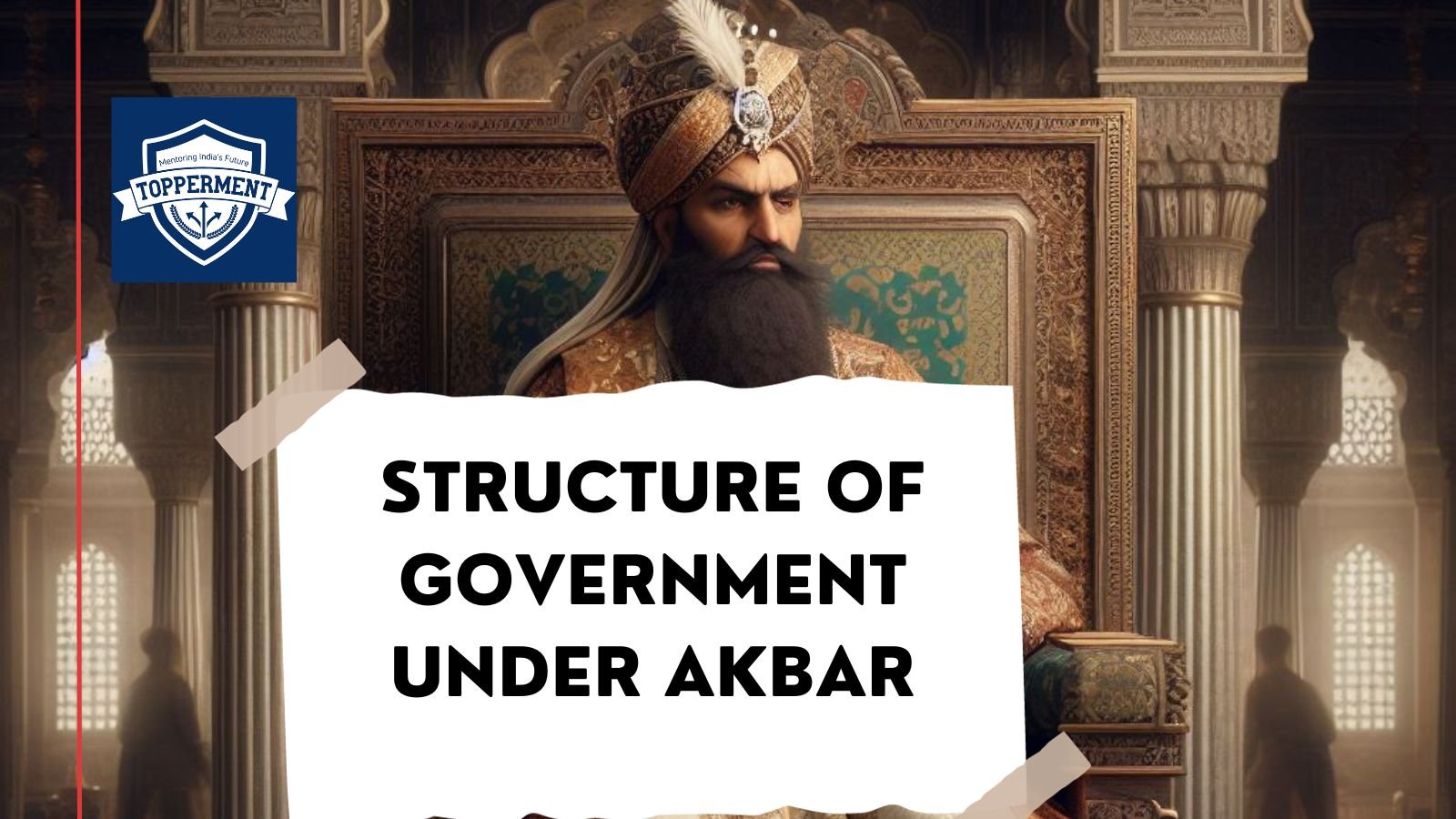During the reign of Emperor Akbar, the Mughal Empire witnessed a well-organized and efficient system of governance
Central Administration:
Imperial Court:
- The center of power was the imperial court, where Akbar made important decisions and received counsel from his ministers.
- The court was a hub of cultural and political activities, with nobles, poets, scholars, and diplomats in attendance.
Council of Ministers:
- Akbar appointed a group of competent and trusted ministers to assist him in governing the empire.
- These ministers held various portfolios, such as finance, military affairs, justice, and foreign relations.
Divan-i-Arz:
- It was a department responsible for military administration, led by the Mir Bakshi.
- The Divan-i-Arz maintained records of soldiers, their salaries, promotions, and other military affairs.
Diwan-i-Wazarat:
- This department dealt with financial matters and was headed by the Wazir or Prime Minister.
- The Diwan-i-Wazarat managed revenue collection, taxation, and distribution of resources.
Diwan-i-Insha:
- The Diwan-i-Insha was responsible for the imperial correspondence, maintaining records, and issuing official orders and edicts.
Provincial Administration:
Subahs:
- The empire was divided into several provinces called subahs, each headed by a Subahdar or governor.
- The Subahdar had both administrative and military responsibilities, ensuring law and order, tax collection, and defense.
Faujdars:
- Faujdars were military officers appointed in each district within a province.
- They maintained peace, controlled local militias, and reported to the Subahdar.
Diwan-i-Subah:
- The Diwan-i-Subah managed the revenue and taxation system within the province.
- It assessed land revenue, monitored agricultural production, and ensured a fair collection of taxes.
Qazi:
- Qazis were appointed to administer justice at the local level.
- They resolved civil and criminal cases based on Islamic law and local customs.
Zamindars:
- Zamindars were influential landowners who played a significant role in revenue collection and local governance.
- They were responsible for maintaining law and order in their territories and managing agricultural activities.
Under Emperor Akbar’s rule, the structure of government in the Mughal Empire was characterized by a centralized authority with a well-defined hierarchy and efficient administration. The central administration, led by a council of ministers, managed various departments responsible for finance, military affairs, and imperial correspondence
Also Read
Follow Us For More Content On:
https://www.instagram.com/topperment/


